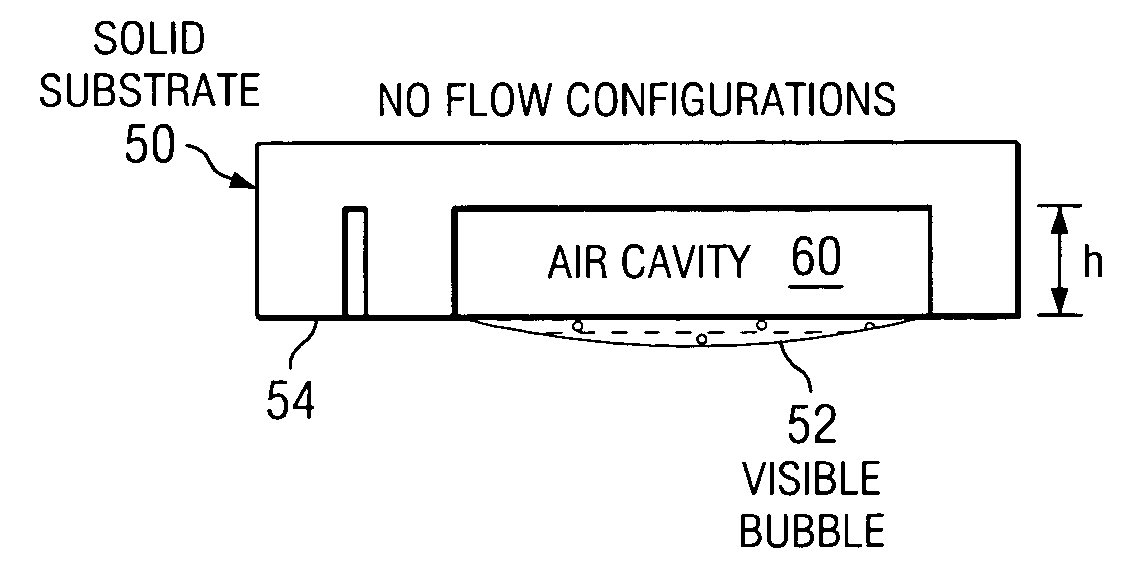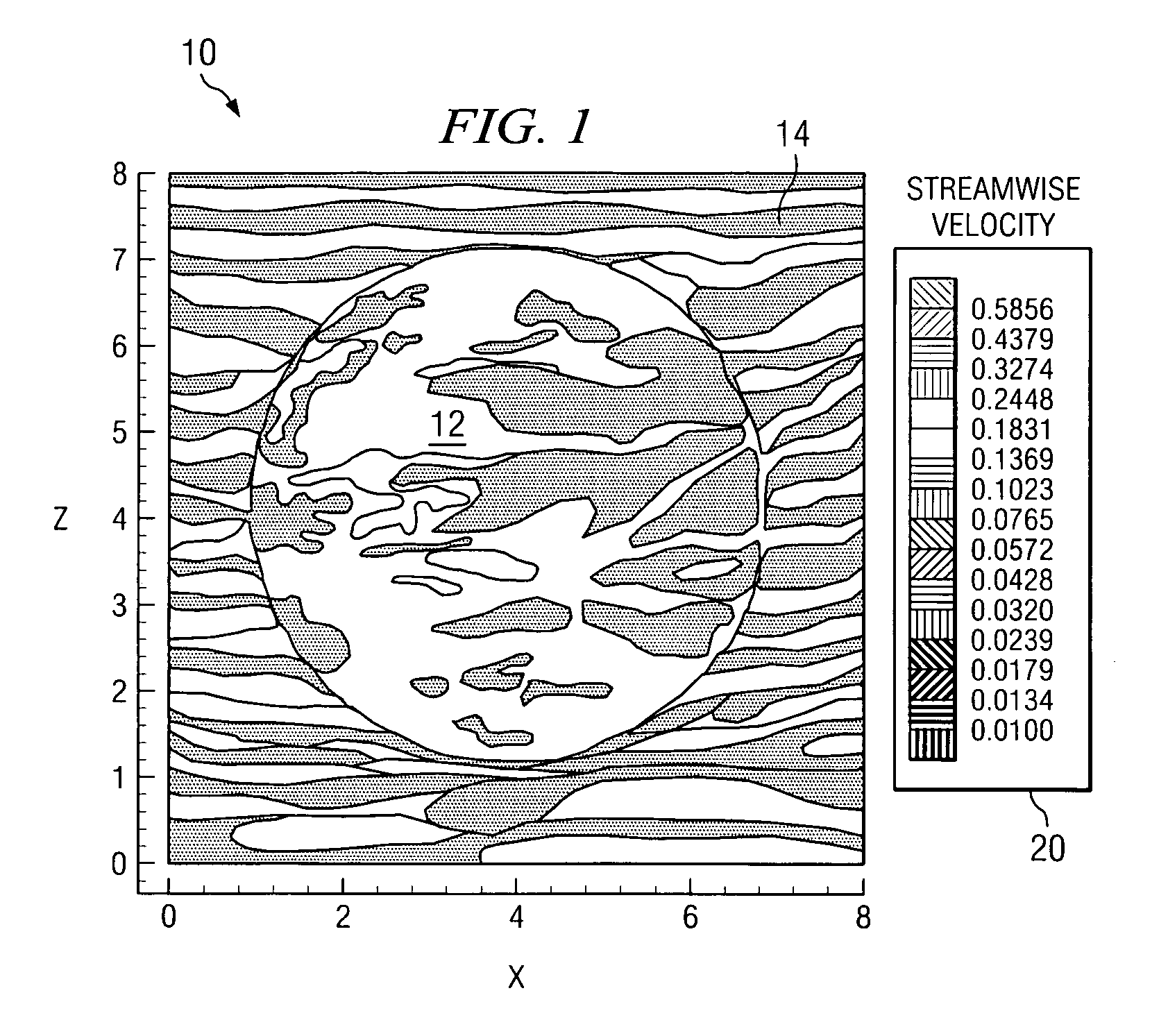Methods for reducing the viscous drag on a surface and drag reducing device
a technology of viscous drag and reducing device, which is applied in the direction of special-purpose vessels, vessel construction, transportation and packaging, etc., can solve the problems of incontestable mechanism for such reduction, inability to carry and replenish, and inability to detect the toxicity of additives, etc., to achieve large drag reduction, reduce drag, and reduce power input
- Summary
- Abstract
- Description
- Claims
- Application Information
AI Technical Summary
Benefits of technology
Problems solved by technology
Method used
Image
Examples
Embodiment Construction
A Trapped Bubble Array
[0017]Described in this section is the Trapped Bubble Array (TBA) concept with numerical and experimental results to date. It should be understood, however, that the principals of the TBA concept may be extended to other applications.
[0018]Consider the following gedanken experiment. We submerge a horizontal flat plate in a water channel and measure the drag on it. We may use a mechanical force balance or measure the velocity profile and perform a momentum balance computation. The flow develops a simple growing boundary layer from the leading edge.
[0019]Now suppose we drill a hole up into the bottom of the plate (but not all the way through) and, using a syringe, inject enough air into the hole so that the bubble capping the hole is virtually flush with the flat plate surface. Will the drag on the plate with the hole be larger or smaller or the same as the drag on the smooth plate? It is suggested here that since the air / water interface is nearly free of shear s...
PUM
 Login to View More
Login to View More Abstract
Description
Claims
Application Information
 Login to View More
Login to View More - R&D
- Intellectual Property
- Life Sciences
- Materials
- Tech Scout
- Unparalleled Data Quality
- Higher Quality Content
- 60% Fewer Hallucinations
Browse by: Latest US Patents, China's latest patents, Technical Efficacy Thesaurus, Application Domain, Technology Topic, Popular Technical Reports.
© 2025 PatSnap. All rights reserved.Legal|Privacy policy|Modern Slavery Act Transparency Statement|Sitemap|About US| Contact US: help@patsnap.com



